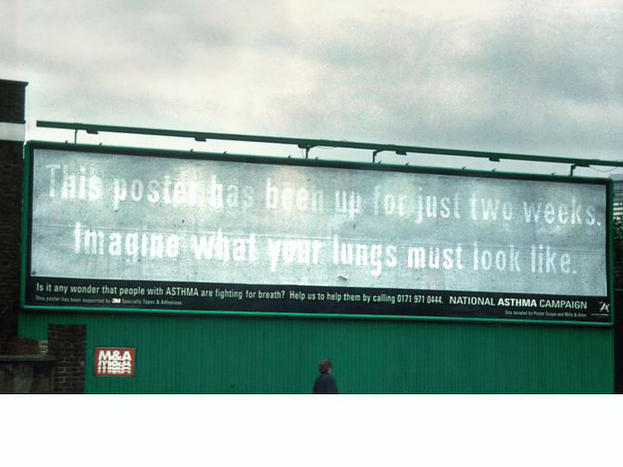Designated Hitters
In baseball they have a player called a ‘designated hitter’. His job is to bat in place of the pitcher.
And in American Football they change the entire team depending on whether or not they’re attacking or defending.
This made me wonder: would it be a good idea for creative advertising to have ‘Concepters’ and ‘Executors’?
Many times I’ve heard of a great idea that didn’t end up with an equally good execution. And I’ve seen a lot of really good executions made from slight ideas.
The job of an advertising creative is very wide-ranging, and perhaps it would help the quality of the finished product if we worked out who was really good at certain parts of the process and allowed them to specialise.
Some creatives are great at choosing the right director. Some are brilliant with music. Some know when you need to scrap an edit and start again. Some are great at evaluating post-production effects. Some find it easy to get the best out of voiceover talent.
And others are great at generating concept after concept.
Leaving aside the two direct skills of copywriting and art direction, could you make a case for bringing in specialist creatives or teams to have input at certain critical moments of the wider creative process?
As an example, 99% of the radio ads I ever made followed the same process: my AD and I came up with idea, I wrote the script, then we both went through some casting and the selection of a recording engineer with the help of the agency producer. We’d then all kind of took on various parts of the directing, editing and SFX process, with no formal demarcation of roles.
But in 1% of the radio ads I was involved in we used a specialist radio production company called Eardrum. They went through a much deeper casting process, which they then shared with us for final approval. During the session they took responsibility for directing the talent (incorporating our suggestions when necessary). They even helped with the script, making more of a feature of the Terms and Conditions in a way that elevated the whole spot.
Then the ads got into D&AD.
Now, I’m not saying that the specialised division of labour entirely caused the excellence of the finished product, but it certainly helped. Eardrum was able to go through more casting possibilities than we had time for, and their experience and familiarity with the talent smoothed and improved the direction.
So is it a practical suggestion? Let’s look at the pros and cons:
Pros: better work (probably; too many cooks can spoil the broth); the best concept creators can be left to do more of that task, instead of taking weeks, or even months, out of the office on pre-prods, shoots and the various elements of post-production; we already do this in a way by involving specialist typographers and the ubiquitous design department, as well as music consultants, and it works well, so where are we drawing the line, and why?
Cons: Expense (although you could argue that it’s an expense that pays for itself by freeing up people to do other things); some hangover feeling that the creatives ought to do everything, whether it’s what they’re good at or not; demoralisation/confusion from ‘lack of ownership’ (if you take the execution of an idea away from its creator you might end up losing the essence of what the concept was supposed to be. Then again, that might not be a bad thing, after all, you hand a lot over to a director or photographer, trusting them to bring back your original vision with their cherry on top).
The above examples concern people who are currently available to be brought into the process – for a price. What if the entire creative process became specialised and freelanced, in the same way as Eardrum?
You have a script approved. Now what? Call two Director Consultants. They spend their entire time keeping up-to-date with every single director across the world. They check out newcomers from film schools and know what big names are currently looking for. Then you could bring on the Shoot Team: a couple who watch every take like a hawk, make script change suggestions based on new circumstances, and know how best to connect with directors to bring their A-game for that client-friendly take. Then the Posters come in, managing the VO sessions from casting to embedding, liaising with typographers and designers for the endline, and working out the exact editorial style that will make the most of the footage.
Then they send all the info back to the concept creators who have spent the last few weeks coming up with the kind of pitch-winning ideas they didn’t have time to explore on a set.
Of course, many of these things are currently managed by agency staff, but if you’re going to bring in a designer for your press layout, why would you not bring in a consultant for your grading session? One with a ton of experience and a cutting-edge knowledge of what could work for your ad. You might say that’s supposed to be the colourist, but who knows if he or she is really on your side and not simply trying out something for his or her own creative interests? If you’ve ever strongly disagreed with a director or post-person but come up against some kind of protocol brick wall, you’ll know what I mean.
It could be chaos; it could work really well. It could cost too much; it could free people up to work on what they’re best at. If we have UX, experiential and social media creatives, that’s a not-very-tacit admission that the 2017 creative can’t do it all.
Bring in the experts, make the work better, stick to what you’re good at and have a better day at work (and create lots more jobs).


